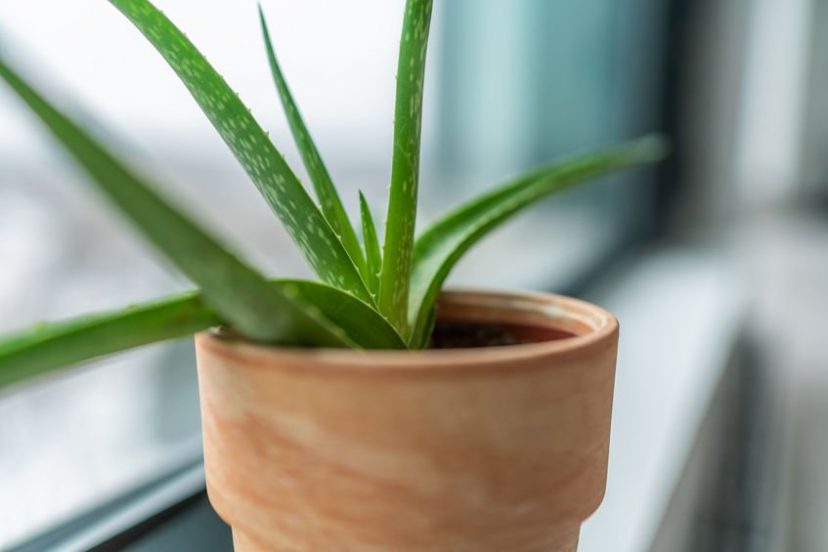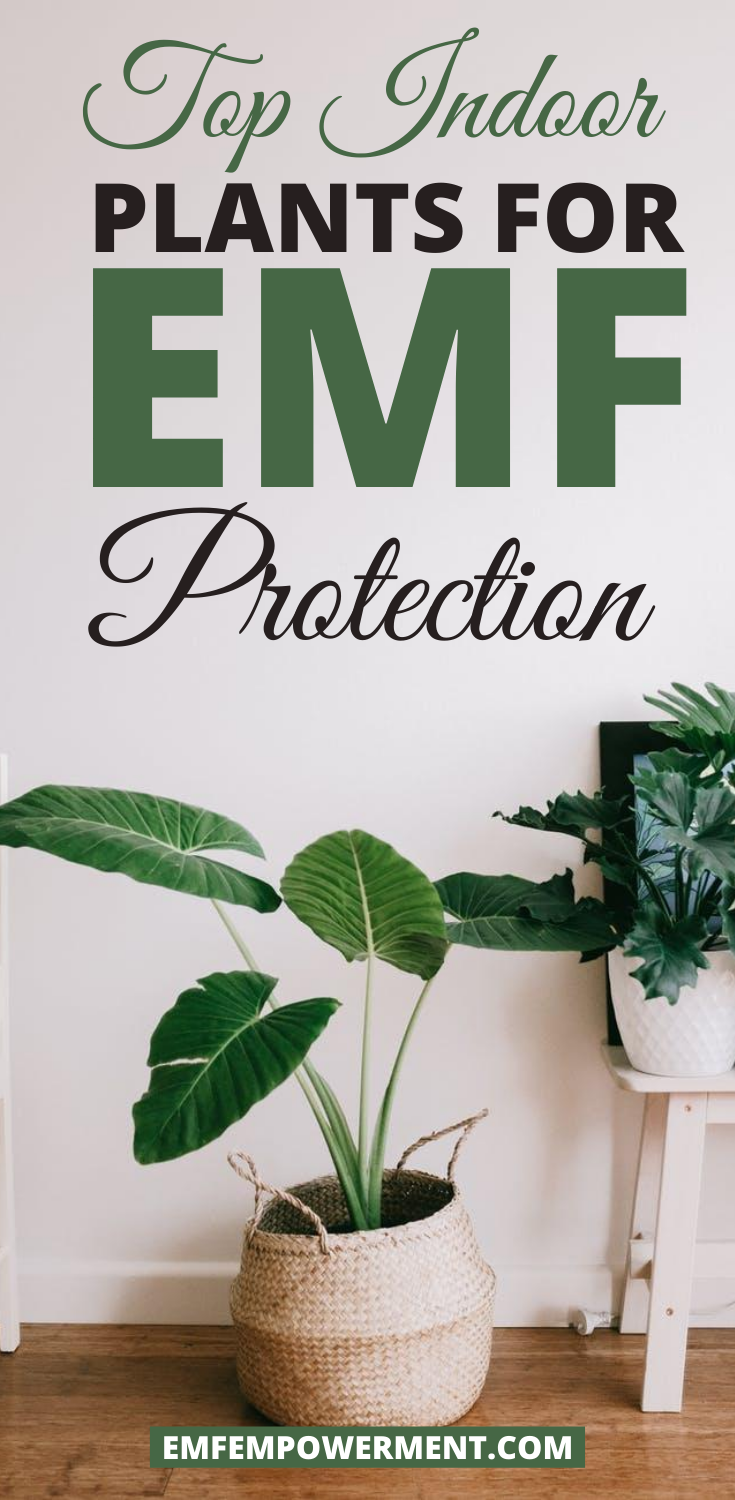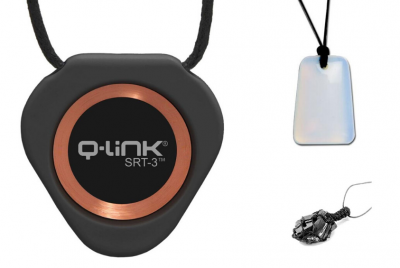When worn correctly, both Bluetooth and wired earbuds offer a lightweight and comfortable way to listen…
Top Indoor Plants for EMF Protection

*We may earn a commission for purchases made using our links. Please see our disclosure to learn more.
You may have heard the term “phytoremediation” tossed around before. It’s a relatively new term, for a process that has been around for generations. Phytoremediation refers to the ability of plants to remove toxins from the environment. Sunflowers, for example, were used to reduce radiation levels after the Chernobyl disaster. It was effective enough that they were used again after the Fukushima meltdown in Japan.
Knowing that plants have been used to combat radiation makes one wonder — could they also be used to help fight against EMF?
Plants and EMF
The answer is a solid “probably.” Plants and EMF haven’t been studied extensively enough to say they can absolutely lower your EMF exposure. The evidence does suggest, however, that plants can be effective at reducing indoor pollution and removing toxins from the air, soil, and water.
Plants may have a place in your overall plan to reduce your home’s EMF levels. You should also take the steps suggested elsewhere on this website, such as switching to incandescent light bulbs, using a smart meter cover, and installing dirty electricity filters. But if you’ve done all that and you are ready to take further action, plants are a great place to start.
We’ve compiled a list of some of the best indoor houseplants for filtering out environmental toxins such as EMF radiation. If you’re looking to add a few new plants to your home, read on for some options to consider.
Aloe
Aloe is a highly useful plant, for a number of reasons. The same plant you use to treat sunburns could also help you monitor your home’s environment for unsafe levels of toxins. If brown spots start to appear on the aloe plant’s leaves, it indicates the air quality in the area is poor. While this could be due to a number of reasons, it could point to high levels of EMF radiation.
One study looked at aloe juice and its protective qualities when it comes to EMF radiation and male fertility. EMF radiation has been shown to decrease sperm quality and quantity. Researchers found that in mice, aloe juice was able to effectively prevent EMF-related DNA damage and help preserve male fertility.
To care for an aloe plant, you don’t have to water it too often. Give it a good soaking every three weeks or so — more in the summer, and less in the winter. Aloe plants do best in bright, indirect sunlight.
Monstera Deliciosa
Monstera Deliciosa is sometimes called the Swiss cheese plant, because of the distinctive holes in its leaves. It has not been extensively studied, either for its EMF shielding properties or other potential benefits. This plant is still on our list, however, because of its ability to purify the air at night. This quality makes Monstera Deliciosa a great plant to have in the bedroom, as in theory, it could help remove EMF radiation from the air as you sleep.
Caring for a Monstera Deliciosa plant is much the same as any houseplant. They require weekly waterings during the prime growing season, but you can get away with less in the winter — you can judge if watering is necessary by feeling the soil for dryness. If the top inch feels dry, it’s time to water the plant. Monstera Deliciosa thrives in bright, indirect sunlight, and it does best at temperatures between 70 and 75 degrees.
Mums
While mums are traditionally an outdoor plant, you can easily take a clipping indoors, or even plant a couple of bulbs in an indoor pot. You’ll get about six weeks of flowers, but the plant itself can live much longer as foliage. Mums were one plant used in NASA’s Plants for Indoor Pollution Abatement Study, and they were found to remove substantial amounts of environmental toxins. While EMF radiation was not a part of NASA’s study, it does show the power of the mums plant to filter out potentially harmful substances from the atmosphere.
Mums are a low maintenance plant, as well. They require good drainage and watering once every week or so. When you water a mums plant, be sure not to get the leaves wet, as that could lead to plant fungus.
Sunflowers
If you read the example earlier in this article about sunflowers being used to reduce radiation levels after nuclear disasters, you probably guessed these flowers would find their way onto our list. Sunflowers are considered “hyperaccumulators”, meaning they are highly effective at removing certain toxic materials from water and soil in particular.
Sunflowers are another plant that can usually be found outdoors. Indoor sunflowers are possible, however. You’ll need a large pot and an area that receives at least six hours of direct sunlight per day. A grow light could be used to replicate the sun in low light conditions, but these are often LED and produce EMF radiation of their own. You are better off placing your plant outside for a few hours a day if necessary.
The watering schedule for sunflowers varies depending on the climate inside your home. Make sure the soil stays moist — as soon as it starts to try out, it’s time to give the plant a good soaking.
Gerber Daisy
The Gerber Daisy was another subject of NASA’s Plants for Indoor Pollution Abatement Study. They were found to be highly effective at removing all of the toxins examined in the study — more so than just about any other plant.
To grow Gerber Daisies indoors, sunlight is key. These flowers require a great deal of direct sunlight, much like sunflowers. A spot near a south-facing window is ideal. Watering Gerber Daisies is fairly straightforward and similar to other plants on this list. When the first inch of soil feels dry, it’s time for a good soaking. Ensure the pot has good drainage, as well.
Maidenhair Fern
Another plant to help safeguard your home against EMF is Adiantum — also known as the maidenhair fern. This beautiful plant is said to absorb RF radiation from electronics. While it has not been extensively studied, anecdotal evidence suggests that placing these in your home office, living room, and other rooms with a lot of electronics could help reduce the amount of RF-EMF radiation present.
The maidenhair fern plant is a little more sensitive than some of the others on this list, so care can be a little more intensive. Maidenhair ferns require a humid atmosphere, so if you are in a dry climate or it’s winter and you’re using the heat, you may need to mist the plant daily. Misting is pretty simple — just fill a spray bottle with water and spray down the leaves of the plant. These plants don’t need a lot of sunlight, and in fact, do better in the shade and indirect light.
Betel Leaf
The Betel Leaf is an edible plant in the same family as pepper. Its radioprotective properties have been studied by researchers in India. Betel leaf was found to prevent mitochondrial DNA damage in rat livers. Although it has not been studied in humans, the results of the rat study suggest the plant could have protective abilities.
This plant does take a little extra effort to grow. You may need to fertilize your betel leaf plant, preferably using nitrogen-enriched organic material. Betel leaf does best in tropical environments, so find a humid and well-lit room. If your home is dry, you may need to mist the plant, just like with the maidenhair fern. You should also check the soil daily to ensure the plant does not dry out, and water whenever necessary.
Mother-in-Law Tongue
Whether you know it as mother-in-law’s tongue or snake plant, this plant is regarded as highly effective at absorbing EMF radiation. The snake plant was also a part of NASA’s Plants for Indoor Pollution Abatement study, and it was also found to have protective abilities against environmental toxins.
Mother-in-law’s tongue is a succulent, so it requires minimal watering. This plant definitely prefers dry environments, so whatever you do, don’t overwater it. Snake plant can survive in high or low light conditions, but it thrives in indirect sunlight. Use a quick-draining soil and make sure to plant this in a pot with plenty of drainage.
Golden Pothos
If you’re looking for a simple plant to vine around some of your electronics, the golden pothos is it. While this plant has not been studied for its protective properties against EMF radiation, it is readily available, can grow in a ride variety of conditions, and is generally regarded as one of the easier-to-grow plants out there. And it vines very well indoors, especially when exposed to indirect sunlight.
If you have a room with a lot of electronics, consider adding a golden pothos. You can easily vine the plant around your electronics, potentially absorbing atmospheric EMF. Care of a golden pothos entails watering it once per week during the growing season, and once every two weeks or so in the winter. There’s no need to fertilize the plant, just ensure the pot has adequate drainage.
Cactus
The cactus is often cited as the most effective plant at absorbing and filtering out EMF radiation. This is because of an often-cited but difficult to find study, said to be conducted by NASA. At the time of this writing, the website for the study was down.
There are still some compelling reasons to own a cactus or two, however. This plant is highly effective at producing oxygen, especially at night. Placing it in your bedroom could potentially filter out EMF radiation as you sleep.
Proper care for a cactus is pretty simple. They don’t require much water — a few tablespoons every couple of weeks is usually sufficient. Make sure their pot has good drainage, and be careful not to water too often. They do need sunlight, but there are low-light varieties available.
How many plants do you need?
NASA recommends placing one plant every hundred square feet. So for a 1,500 square foot home, you would want a minimum of 15 different houseplants. Use different species of plants to receive the widest array of benefits.
Different plants thrive in different conditions, as well, so you may need to find plants that work in each room of your home. A maidenhair fern might go well in the bathroom, for example, because they will benefit from the added humidity every time the shower is used. Bathrooms tend to be dimly lit, as well, and maidenhair ferns do best in the shade.
How do plants protect against EMF radiation?
Plants purify air through the process of photosynthesis. You may remember hearing that term in fifth-grade science class, but in case you could use a refresher — photosynthesis involves a plant taking in carbon dioxide in the surrounding air. Plants turn the carbon dioxide into oxygen, which is then released into the environment. This oxygen has been filtered through the plant, removing many environmental toxins — potentially including EMF radiation.
Final thoughts
When it comes down to it, most plants have not been studied for their radioprotective abilities, especially when it comes to EMF radiation. However, plants have been shown to reduce environmental toxins. NASA’s study was a solid indication that plants are able to filter pollution. It’s not too far-fetched, then, that they may also safeguard against EMF radiation.
Most of the plants on this list are fairly easy to care for. And all of them have benefits beyond their EMF protective abilities, as well. They provide oxygen, boost your mood, and for many, caring for plants is an enjoyable activity.
If you are trying to reduce your home’s overall EMF radiation levels, plants can be one piece of the puzzle. They will by no means protect you from all the radiation in your home. You still need to take common-sense measures such as relying on wired internet access and using a protective case for your cell phone. But having the recommended amount of plants in your home may help reduce your home’s overall levels even further, and that is a step in the right direction. 



